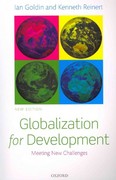Consider the method for finding Nash equilibria detailed in 8.c. Explain whythis method works for finding Nash
Question:
Consider the method for finding Nash equilibria detailed in 8.c. Explain whythis method works for finding Nash equilibria. How do we know that a Nashequilibrium found by this method will be guaranteed to be an actual Nash?
B. Consider the following version of a game in which each player simultaneouslychooses either Heads or Tails. If they choose difi‘erently, both get 0. If they bothchoose Heads, both get 2. If they both choose Tails, both get 1.
a. Draw the game table and find all Nash equilibria.
b. Is “both players play Tails” a Nash equilibrium? Explain why it can be a Nasheven though both players would prefer “both players play Heads.
C. Find the Nash equilibrium on the table below.
Market Leader (M)
Lot Little $80m for E ' $Om for E , $80m for M $Om for M $0m for E $0m for E $99m for M $40m for M Enter Entrant (E)
Don’t D. Draw your own game table. Specifically, draw one in which following the stepsin 8.c will produce no Nash equilibria! [HINTz Rock—Paper—Scissors is anexample of a game like this.]
E. You are playing a prisoner’s dilemma, in which you can Cooperate or Betrayyour partner. You’re both better off if you both Cooperate, but each player’s best response is to Betray. Before making your simultaneous plays, you both agree toCooperate. Explain whether this is likely to lead to both of you Cooperating.
F. Consider a game between Firm A and Firm B. First, Firm A chooses whether to invest. Then, Firm B chooses to advertise A Lot or A Little. The payoffs are(4 for A, 4 for B) for strategies (Invest, A Lot), (1 for A, 5 for B) for (Invest, A Little), (2 for A, 2 for B) for (Not, A Lot), and (3 for A, 1 for B) for (Not, A Little).
a. Draw the game tree and solve it.
b. If Firm A could offer to reverse the order the decisions are made in, would it want to?
c. Would Firm B want to reverse the order?
G. Consider a game in which an Entrant first chooses to Enter or Not Enter. If it does Not Enter, then the Market Leader is a monopolist, and the Entrant gets 0.
If it does Enter, then it pays a fixed cost of 100 and colludes with the Market Leader to set the monopoly price. The Entrant gets 1/4 of the market if MC = Ofor both firms and inverse demand is P = 44 — QD.
a. Calculate each firm’s profits if the Entrant Enters, and if it does Not Enter.
b. What will the Entrant do in Nash equilibrium?
H. Consider the “tipping game” in which you (Y) are at a restaurant. The server (S)
first either provides Good service or Bad, and then you either Tip or Stiff (don’t tip). The payoffs are (4 for S, l for Y) for (Bad, Tip), (3 for S, 3 for Y) for (Good, Tip), (2 for S, 2 for Y) for (Bad, Stiff), and (1 for S, 4 for Y) for (Good, Stiff).
a. Draw the game tree and find the Nash equilibrium.
b. Would you expect people to tip more at restaurants where they’re regulars, or strangers?
c. Why do you think people tip at restaurants they’re never going back to? It’sclearly behavior we observe. Have we just designed this particular game in away that doesn’t represent reality, or can game theory not explain this behavior at all? There’s not a single right answer here.
Step by Step Answer:

Globalization For Development Meeting New Challenges Meeting New Challenges
ISBN: 9780191624032
1st Edition
Authors: Ian Goldin, Kenneth Reinert






